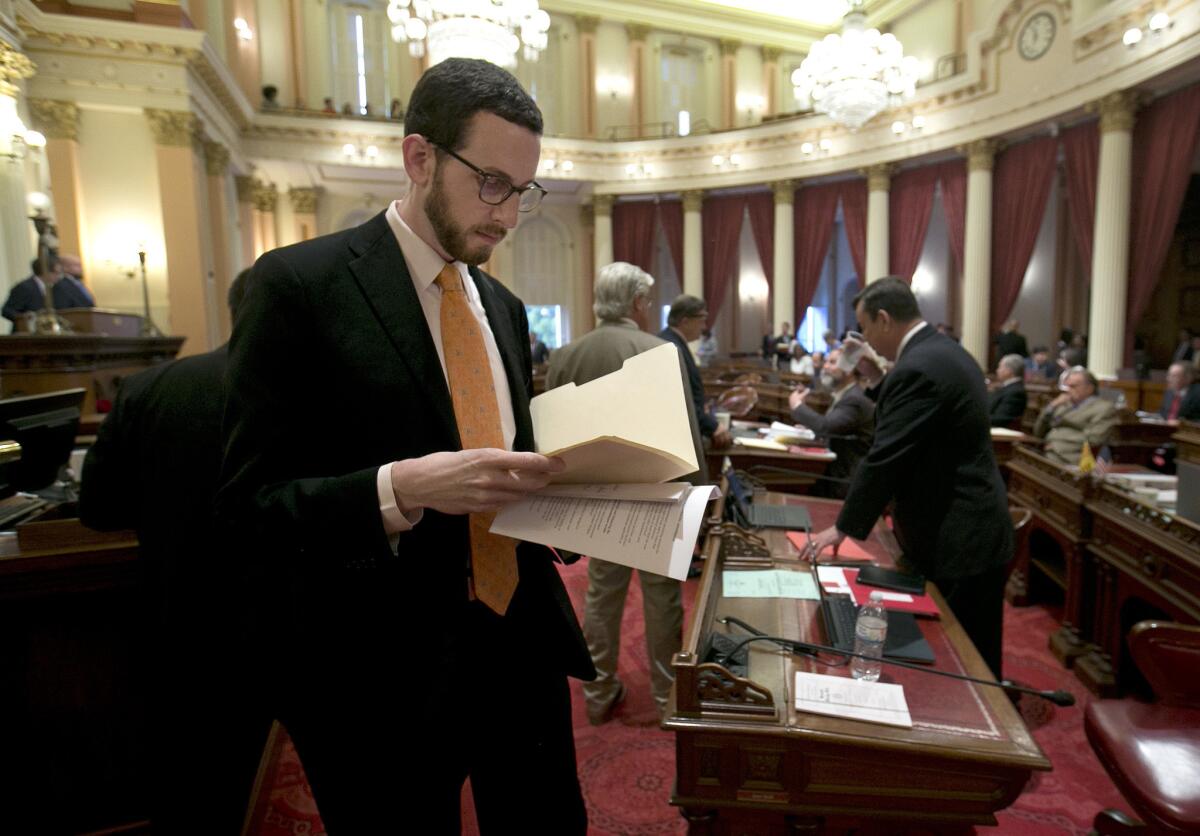After SB 50’s defeat, California lawmaker unveils ‘light touch’ housing density bill

- Share via
SACRAMENTO — Six weeks after his high-profile effort to force California cities to increase housing density failed in the Legislature, the Democratic lawmaker behind the proposal introduced on Monday what he called a “light touch” approach — still pushing for more housing units in many single-family neighborhoods while also offering other communities the ability to skip lengthy environmental review for larger projects.
The bill by state Sen. Scott Wiener (D-San Francisco) would allow construction of duplex, triplex and fourplex residential units without additional local government approval in single-family neighborhoods using what’s known as “by-right” provisions of state law. The number of units that could be built would depend on the size of the city, with fourplex projects aimed at cities with a population greater than 50,000.
While the bill would not change local control over the size and shape of housing built in those neighborhoods, it would supersede local zoning rules that have limited density.
“It will create a baseline zoning for the state,” Wiener said. “This is sort of a light touch density, but it has the potential to substantially increase housing supply over time.”
The new legislation, Senate Bill 902, also seeks to provide incentives for larger cities that are willing to allow 10-unit projects. After a vote by local officials, those zoning efforts would be exempt from additional review under the California Environmental Quality Act, or CEQA.
“I think we’re going to be able to have a collaborative conversation with cities,” Wiener said.
In January, the state Senate rejected Wiener’s three-year effort to force more California communities into adding more housing units for single-family neighborhoods and to increase housing density in areas around public transit and job centers. His high-profile Senate Bill 50 faced fierce opposition, both from those who saw it as an intrusion on the decision-making power of local government and others who thought it would do too little to build more low-income housing.
Senate President Pro Tem Toni Atkins (D-San Diego) called the defeat of SB 50 a moment to “reset the conversation” on a far-reaching approach to the state’s housing crisis. And Senate leaders have promised a comprehensive approach this spring to the lack of housing production in California. Wiener told reporters on Monday that he believes SB 902 will fit well into those broader efforts.
“I believe there is significant political space to make change and move the dial on housing this year,” he said.
Population numbers compiled by the state Department of Finance show that under the density standards in SB 902, more than three-quarters of all California cities would have to allow triplex or fourplex projects on existing residential land. Wiener’s bill would not allow a single-family home to be demolished for a higher-density project if it had been rented out at any point over the previous seven years.
The bill would not mandate increased housing density in areas designated by the state as “very high fire hazard severity zones.” But it does apply in other areas — including coastal communities — where lawmakers had expressed concern last year about significant boosts in housing density.
If successful, Wiener’s effort could produce the most marked results in parts of the state already tasked with facilitating significant new increases to housing production. Last November, Southern California officials signed off on adding more than 1 million new houses in Los Angeles and Orange counties to meet projected population increases. Rezoning efforts in the state’s urban centers could prove costly and cumbersome if critics of new housing demand additional review under CEQA. SB 902 would allow those broad zoning changes to be made outside of the CEQA process.
“This is about changing land-use patterns over time,” Wiener said.
More to Read
Sign up for Essential California
The most important California stories and recommendations in your inbox every morning.
You may occasionally receive promotional content from the Los Angeles Times.











